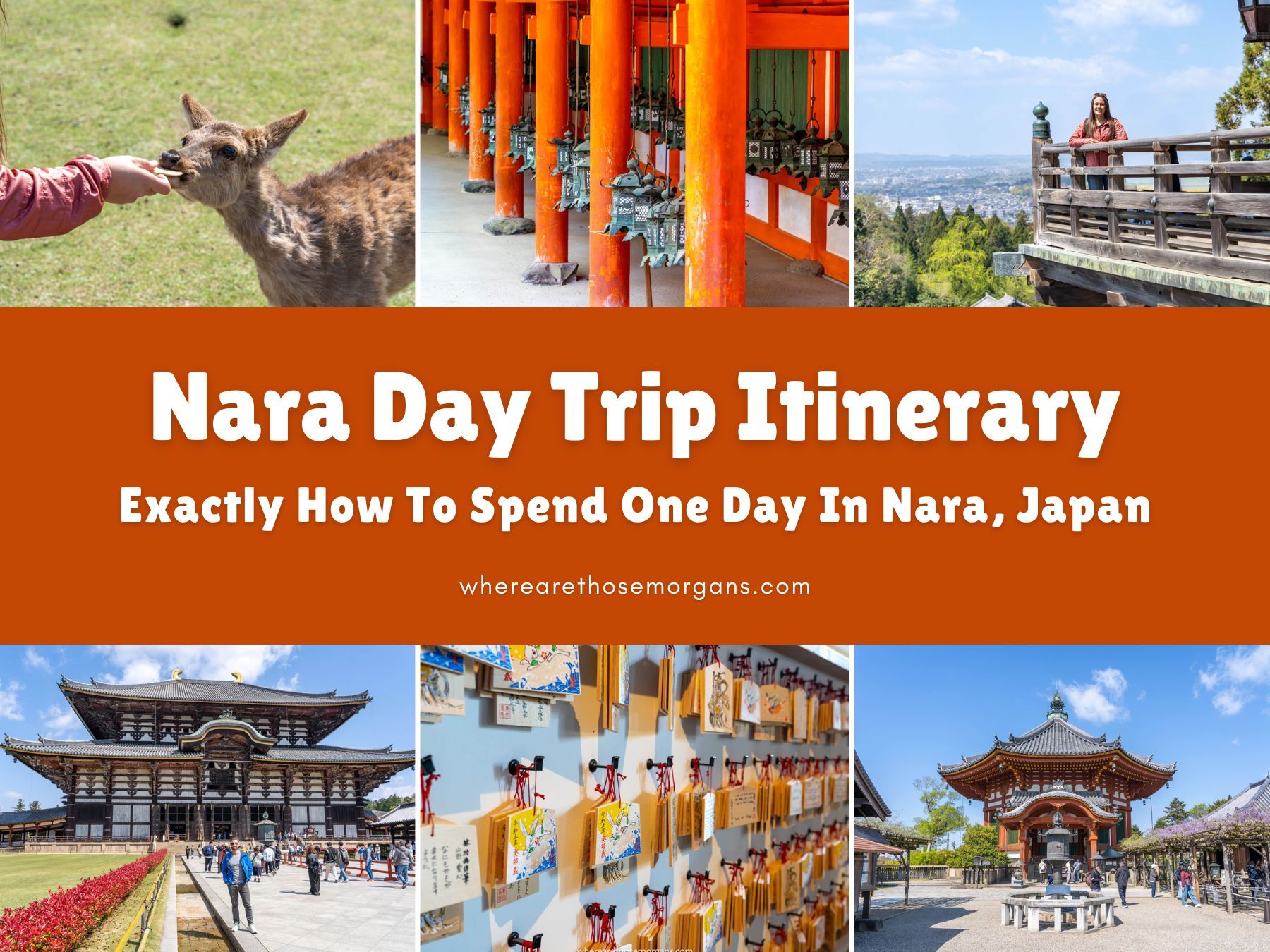Nara is probably our favorite day trip destination in Japan because it’s easy to visit from both Osaka and Kyoto, there’s tons to see and do, the food is great and it’s small enough to tick everything off in a few hours.
We’ve done two day trips to Nara ourselves (in spring and fall) and honestly we think it should be an unmissable part of every first timers Japan itinerary. It’s perfect for families, couples, solo travelers or groups, and it’s a beautiful place to explore. Read more about us.

Upon arrival into Nara you’ll find a charming city bursting with Buddhist temples, Shinto shrines, ancient history and more than 1,000 wild deer roaming freely around town. Yes, you read that correctly, wild deer. And you can even feed them!
But with so much to see in Nara, how do you put it all into an efficient one day itinerary? Well, that’s where our expertise comes in. Follow our walking route exactly and you’ll see all of Nara’s top attractions without wasting any time. But figuring out trains is the most confusing part of this day trip, so we’ll get that out of the way first. Okay, let’s begin!
Note: Our content is reader supported and contains affiliate links. If you make a purchase through one of these links, we may earn a small commission at no extra cost to you and it helps us keep this site running.
Take A Train To Nara
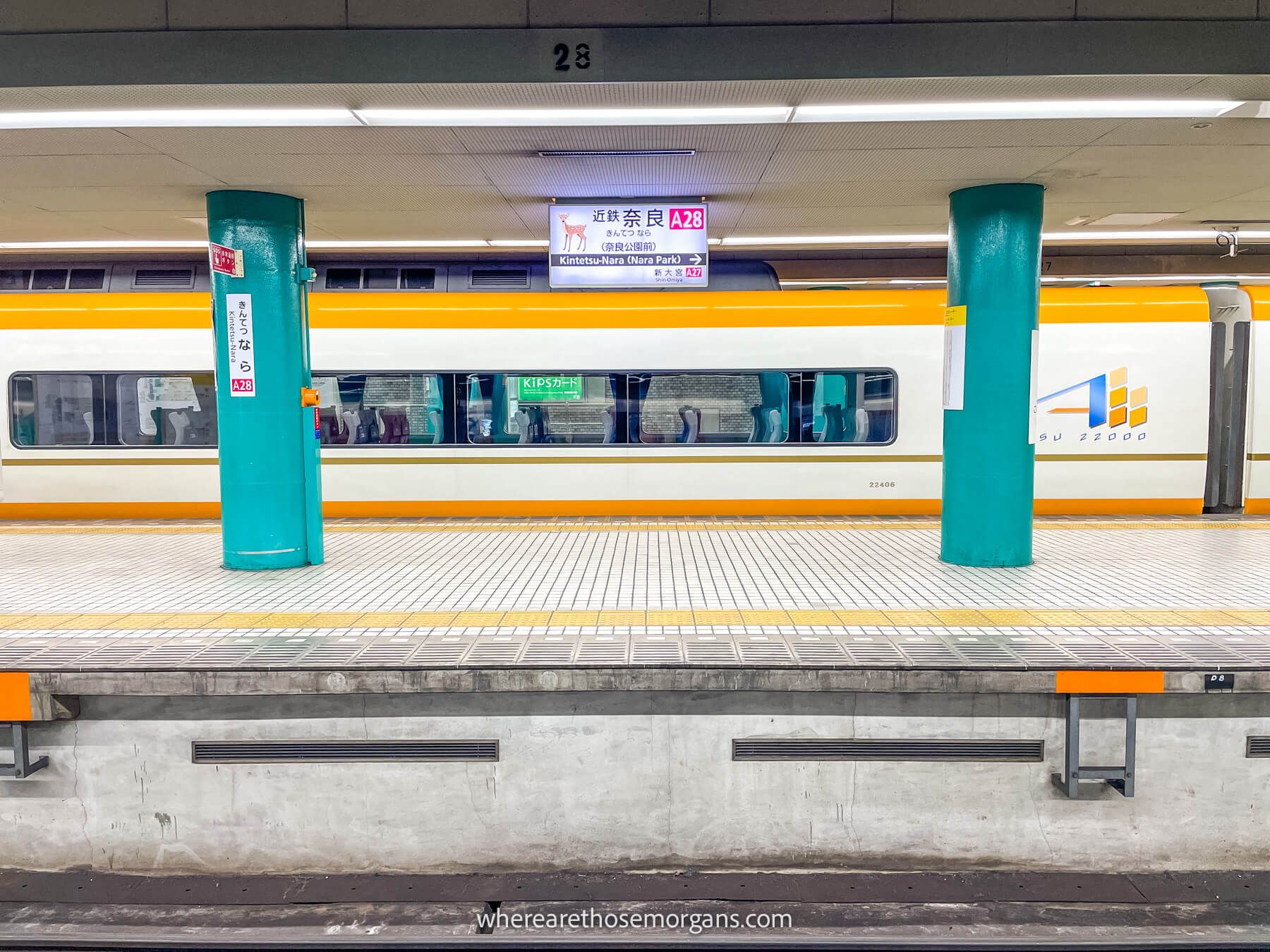
Okay, it’s important to get a nice early start so you have more time in Nara. Wake up early and get to the train station in either Kyoto or Osaka well before 8:00am so you’re in Nara by 9:00am at the latest. Trains in Japan are timely, comfortable, fast and reasonably priced. But they can also be confusing because there’s two different ways you can travel – either with or without a JR Pass.
What’s a JR Pass? It’s essentially a 7, 14 or 21 day train ticket that gives you unlimited travel on all JR lines (long and short distance). We didn’t get one the first time we visited Japan, but we did the second time and overall it worked out cheaper with the JR Pass because we took a lot of trains. Here’s the official site to look at your JR Pass options.
And just to make things even more confusing, Nara has two train stations. The first is Nara JR Station, which you should use if you buy a JR Pass for your trip to Japan because it’s free with your pass. And the second is Kintetsu-Nara, which you should use if you don’t buy a JR Pass because it’s cheaper, quicker and gets you closer to the attractions in town.
Here are your train options from Osaka to Nara:
- JR Yamatoji Line – Travel direct from Osaka Station into Nara JR Station which takes 50 minutes and costs ¥800 or it’s free with JR Pass.
- Kintetsu Nara Line – Travel direct from Osaka Namba Station to Kintetsu-Nara which takes 40 minutes and costs ¥560.
Here are your train options from Kyoto to Nara:
- JR Nara Line – Travel direct from Kyoto Station into Nara JR Station which takes 45 minutes and costs ¥710 or it’s free with JR Pass (make sure you take the Miyakoji Rapid train and not the local train otherwise it adds on another 25 minutes).
- Kintetsu Kyoto Line – Travel direct from Kyoto Station to Kintetsu-Nara which takes 45 minutes and costs ¥620.
Tip: Both train stations in Nara have storage lockers big enough for any type of bag, backpack or suitcase. So you can easily do a day trip to Nara in-between visiting Osaka and Kyoto – in fact, that’s exactly the best way to do it if you want to keep your Japan itinerary efficient.
Start At Kofuku-ji Temple
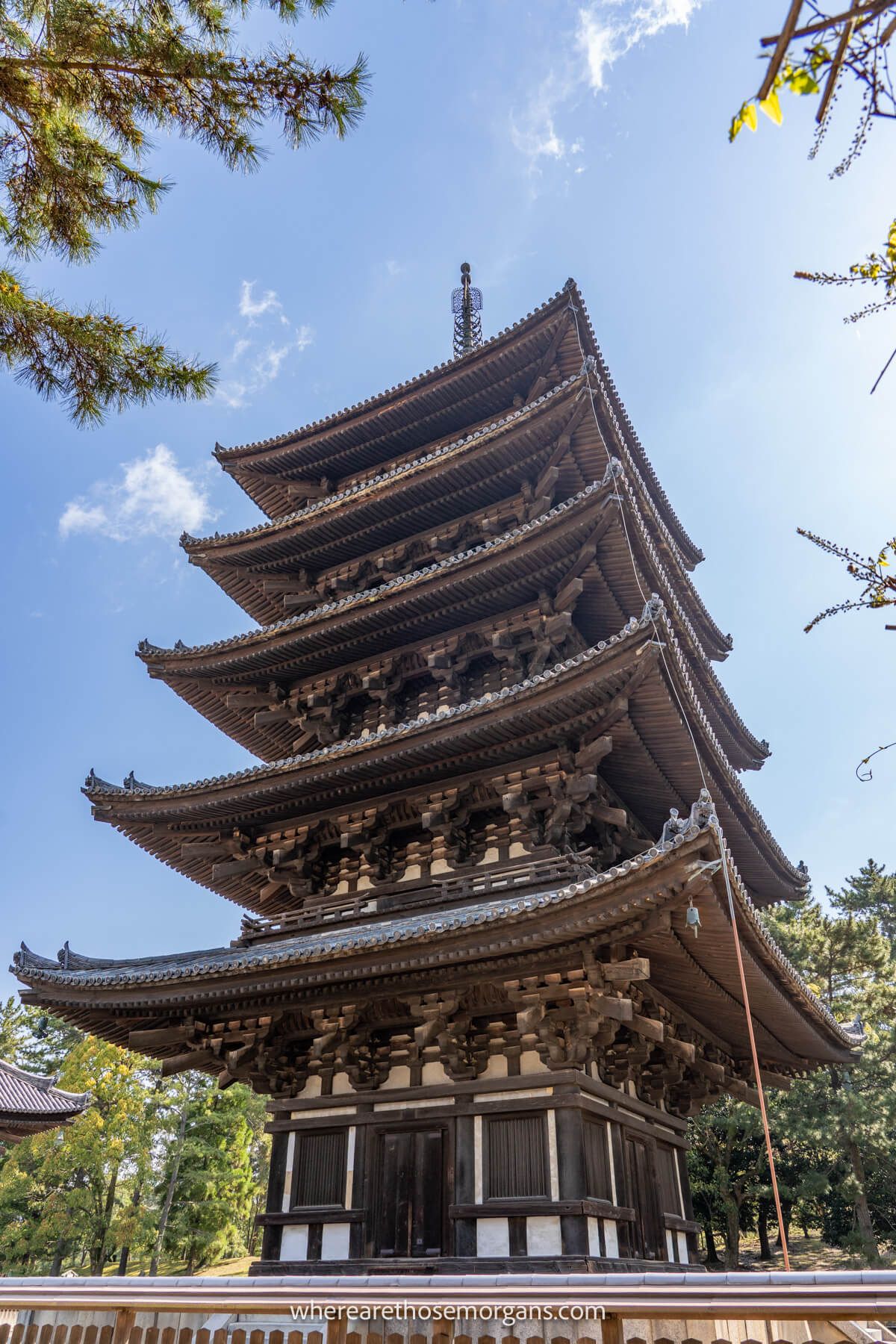
Right, that’s the hard part out of the way, you’ve arrived into Nara and you’re ready to explore. The first place to aim for is Kofuku-ji Temple, which is a 5 minute walk from Kintetsu station or a 20 minute walk up Sanjo dori Street from the JR station.
Kofuku-ji Temple is actually a complex of 7 buildings and grounds on the west side of Nara Park, which includes the second tallest five-story pagoda in Japan. This area is incredibly photogenic, so you’ll need your camera or smartphone straight out at the first stop.
The grounds are free to enter and walk around, but the National Treasure Hall costs ¥700, the Central Golden Hall costs ¥500 and the Eastern Golden Hall costs ¥300 to enter. You can also buy a combined ticket for ¥900 to save money. Here’s the official website to learn more.
Feed The Sika Deer
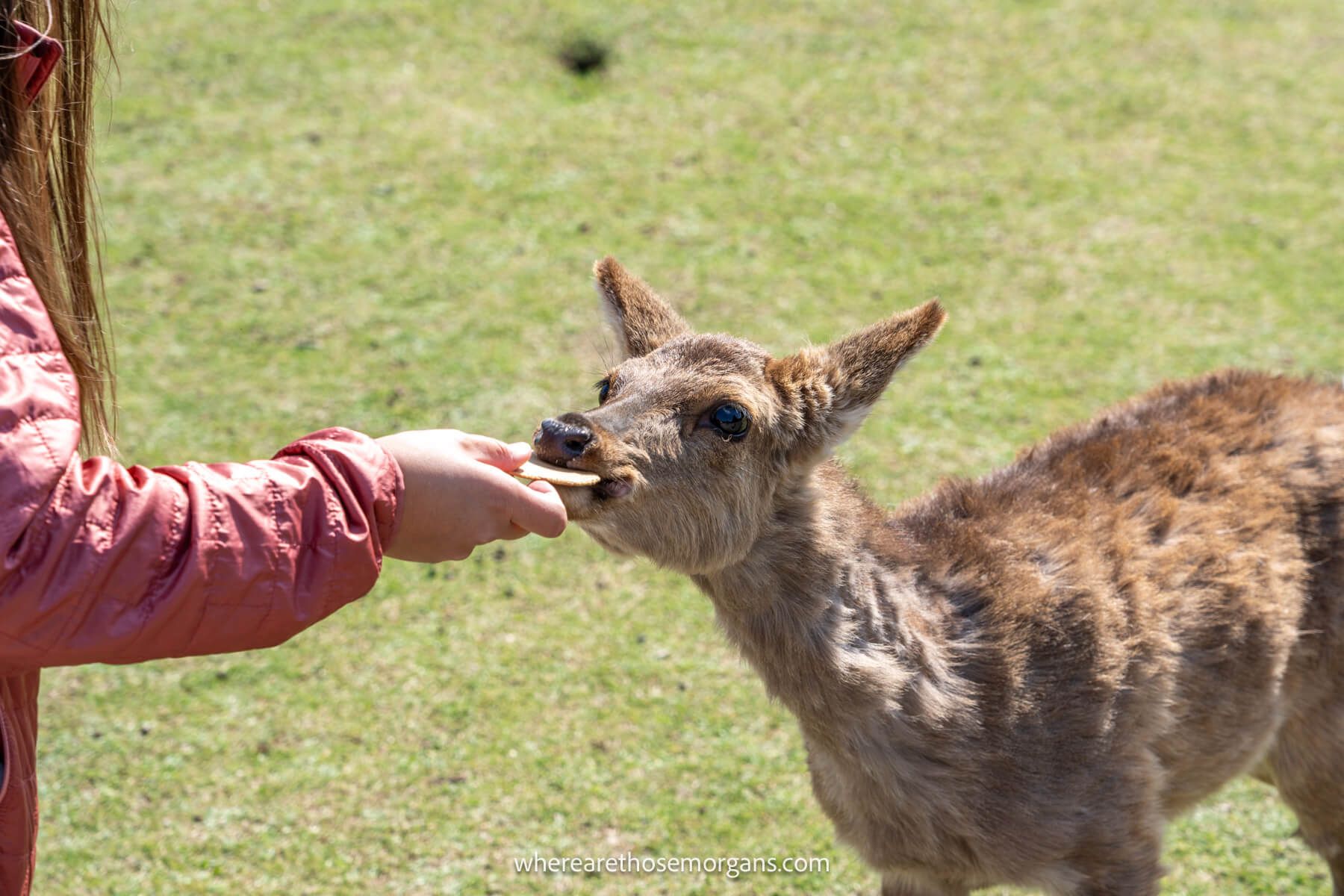
By the time you finish at Kofukuji you’ll probably have already seen tons of deer walking around. If not, head east towards Nara National Museum and you’ll find yourself in a huge park with hundreds of sika deer freely roaming.
Look for small stalls or stands with locals selling crackers and buy a few packs so you can feed the deer. But here’s a word of warning – the deer are not scared of humans and some of them can be pushy, or even bitey.
Kristen got bitten the first time we visited, so read our guide on how not to get bitten by a deer in Nara to avoid the same fate.
Visit Nara National Museum
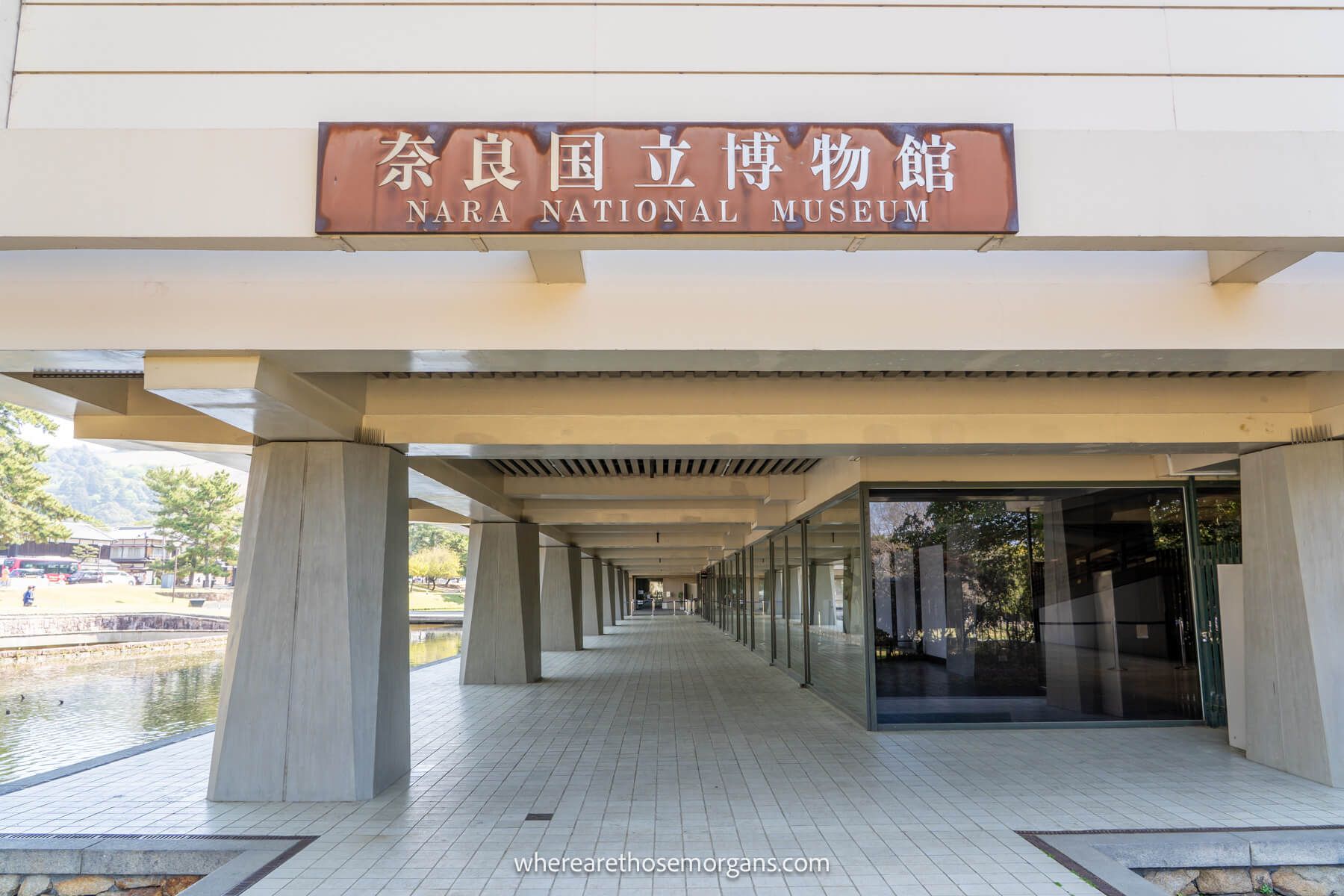
You’ll see deer for the whole day, so take it easy this early and save some crackers for later. Make your way into Nara National Museum to spend around one hour learning about Japanese Buddhist art and culture. It would be better to stay longer, but there’s a lot more to see and not much time.
Inside the museum you can see precious Buddhas and ancient Chinese bronze from the Shang (Yin) to Han dynasties, along with plenty more important sculptures, paintings and artifacts from Japanese history. Admission is ¥700, and here’s the official website to learn more.
Explore Yoshikien Garden
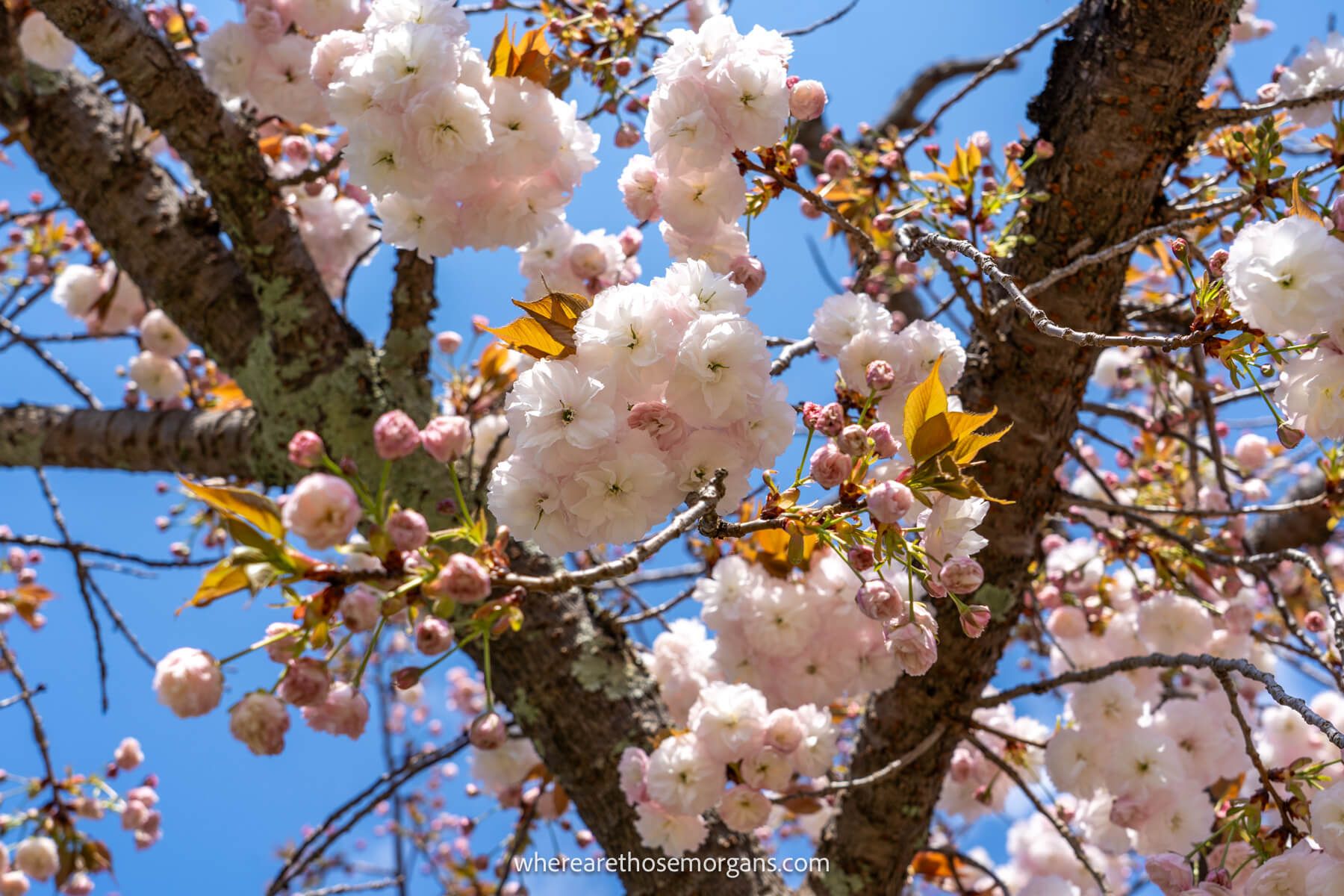
From the museum it’s less than 10 minutes walk north to Yoshikien Garden, which houses three different variations of Japanese gardens – a moss garden, a pond garden and a tea ceremony garden – in the same place.
Look, it’s not the best garden in Japan by any stretch (we’ve been to some amazing gardens in other parts of Japan), but it’s free to enter if you show a foreign passport and it doesn’t take long to walk around which is great for this itinerary.
That said, if you love Japanese gardens and want to see more, you can also pay ¥1,200 to go inside Isuien Garden which is basically next door to Yoshikien, and it also houses a small museum.
Visit Todai-ji Temple
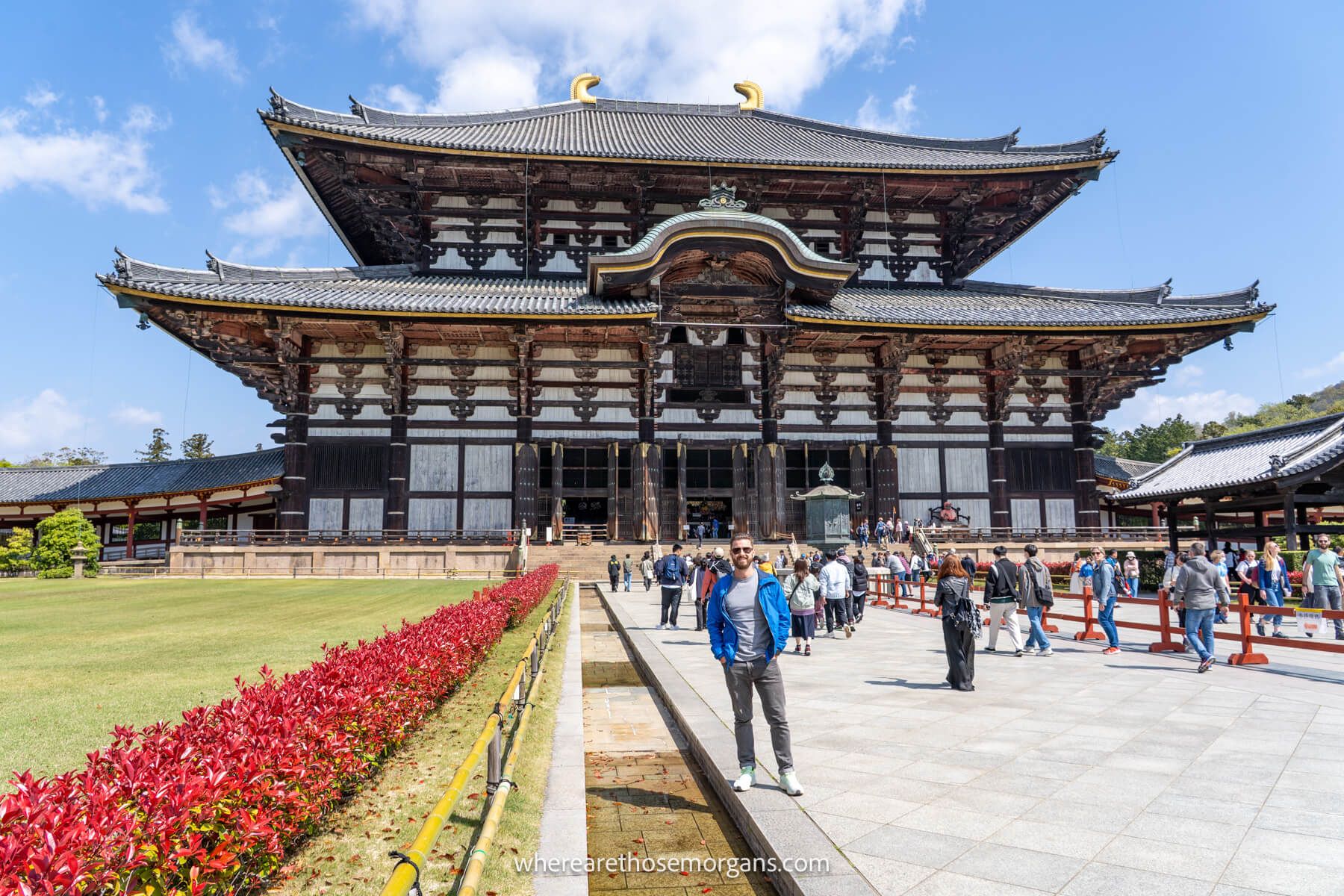
From the gardens it’s just a few minutes walk east to Todai-ji Temple, which is Nara’s flagship tourist attraction and one of the world’s largest wooden structures. We were blown away by the sheer size of the temple from the outside, so don’t miss it.
Inside you’ll find one of the world’s largest bronze statues called the Vairocana Buddha (the Buddha of Light), along with more imposing statues. There’s also a hole the same size as one of Buddha’s nostrils hidden in a wooden pillar that you can climb through and it’s said to give you enlightenment.
Admission for Todai-ji Temple is ¥800 for adults and ¥400 for children (6-12 years old). It’ll be the busiest place you’ll visit all day by far, but it’s definitely worth going inside and it doesn’t take long to get around.
Walk Up To Nigatsu-do Temple
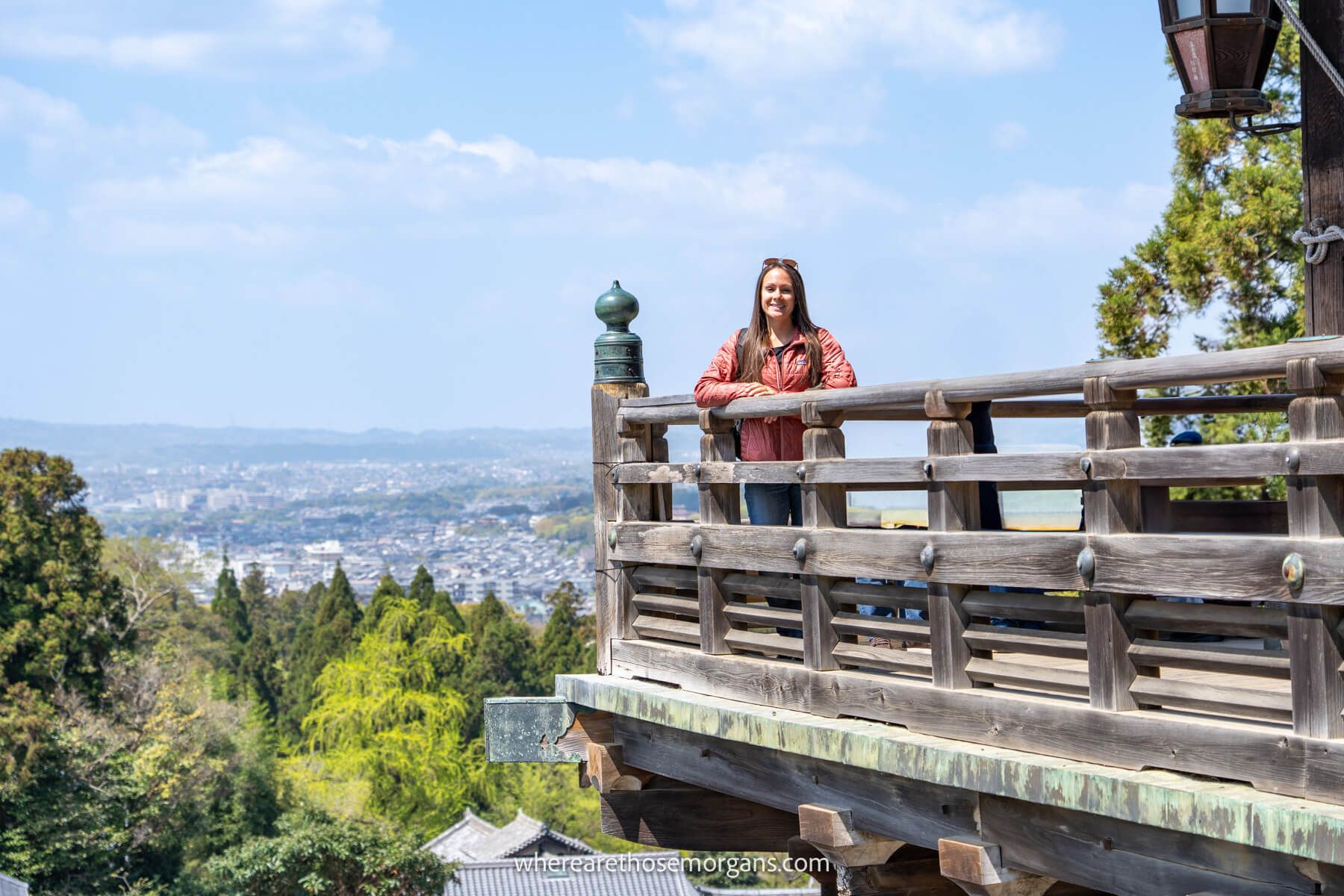
Head east, climb up a picturesque stone staircase and pass by the Bell Tower until reaching Todai-ji Nigatsu-do Temple. There’s quite a lot to see up here, but the best part is excellent elevated views from a balcony – which also makes for a super photo spot.
We won’t lie, the walk up is a bit of a lung buster but it’s worth it for the vista. Just don’t spend too much time recovering because there’s still a lot more to see yet!
Climb To Mount Wakakusa Viewpoint
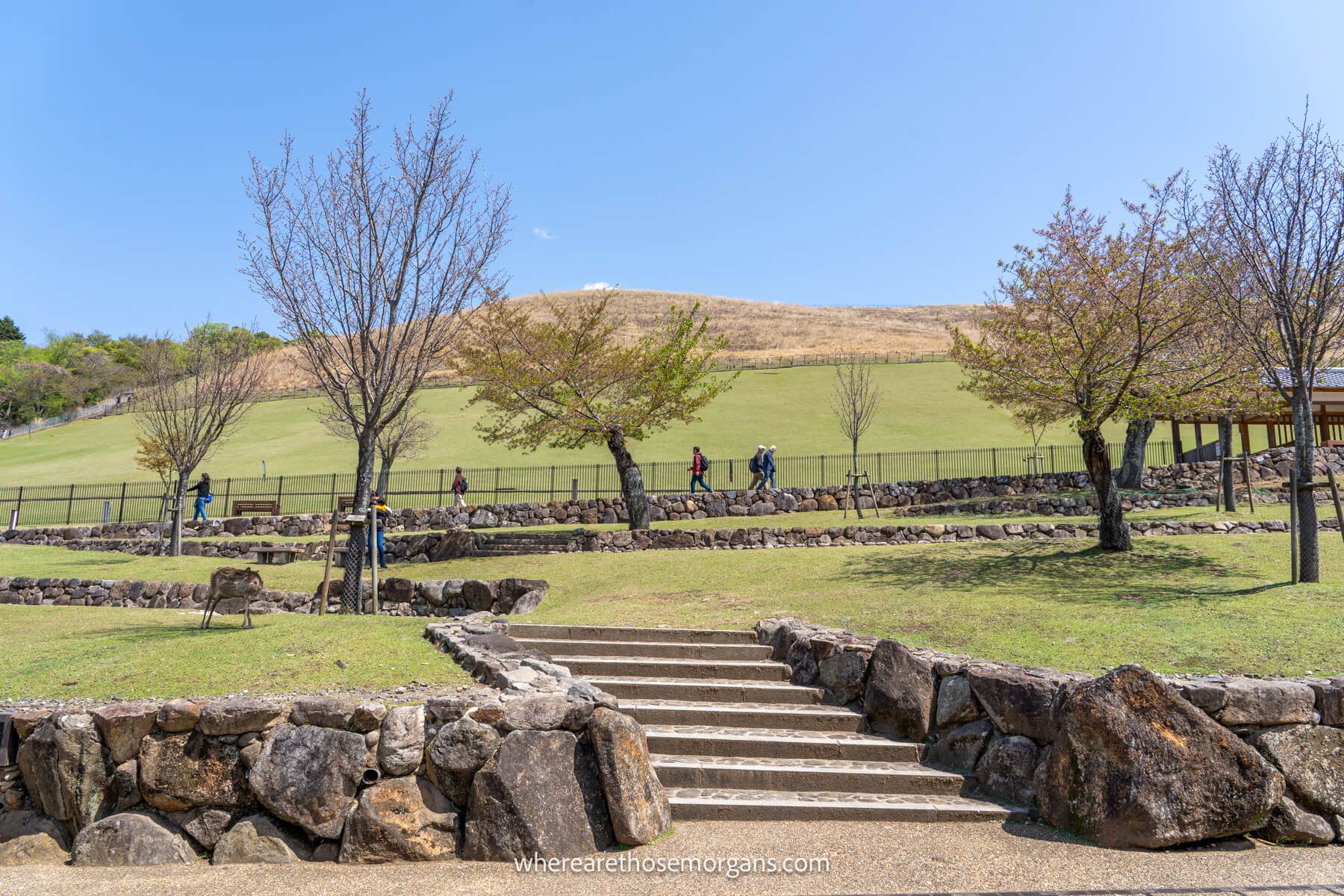
From Nigatsu-do, walk south for 5 minutes until reaching a road with shops and restaurants. A few steps after the road begins, you can turn left to climb up a long (and we mean long!) staircase which eventually transitions into a narrow track and leads to a flat grassy summit at the top of Mount Wakakusa.
From the top we enjoyed far reaching views over the entire region and definitely thought it was worth the effort. But it was undoubtably a thigh burner and it did eat up quite a lot of time, so only do this if you’re feeling energetic and have plenty of time left. If you do it, come back down the other side so it’s a loop rather than an out and back.
Eat Lunch At Mizuya Chaya
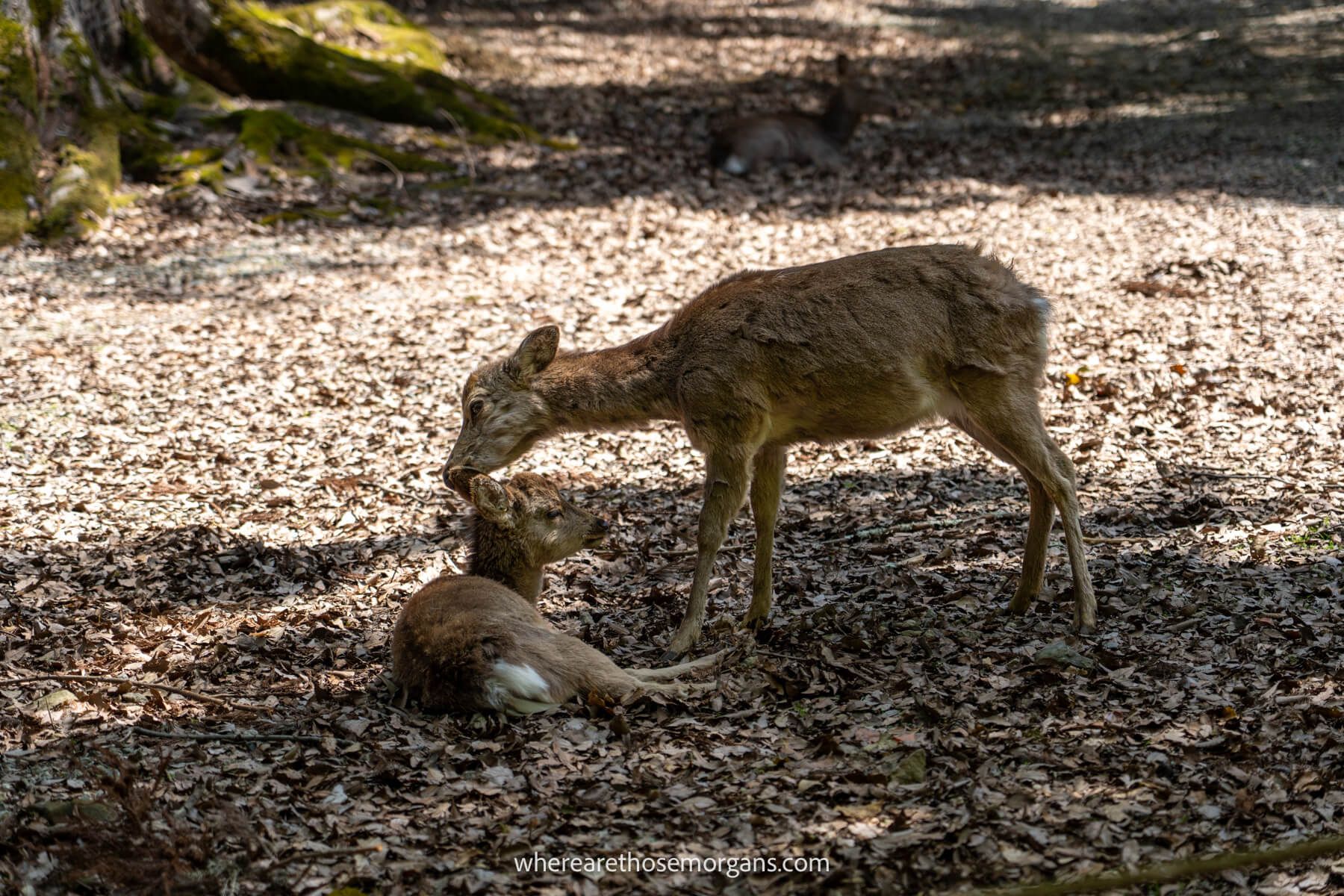
Okay, how good is the food in Japan?! We absolutely love ramen, but there’s tons more amazing types of food to try, and honestly we could quite happily book a flight into Tokyo right now just to gorge on food for a week.
Our recommendation for Nara is to hold off eating until you reach Mizuya Chaya, which is at the bottom of a staircase next to a bridge as you walk from Mount Wakakusa (even if you don’t hike up to the top you’ll still walk this way) to Kasugataisha Shrine.
We got a delicious chicken and udon noodle soup (the broth was so tasty), ate it outside among the deer and appreciated being off our feet for a few minutes. We’ve heard some people say this place is overrated or too busy, but we thought it was great.
Explore Kasugataisha Shrine

After lunch, walk a few more minutes south through a picturesque forest and past small shrines until reaching the amazing Kasugataisha Shrine, which dates back to 768 AD.
Inside you’ll find stone and bronze lanterns that have been donated by worshippers, and it’s surrounded by hundreds of stone pillars with moss covered lanterns. It’s incredibly photogenic, and in our opinion it’s another unmissable stop to make on your day trip.
Each year on February 3rd and August 14-15th, thousands of lanterns are lit in unison at the shrine to signal the beginnings of spring and fall respectively. It costs ¥700 to enter and the museum is another ¥500. Visit the official website for a map and to learn more.
Also nearby is the Manyo Botanical Gardens which we thought was okay but not great, especially compared to the rest of Nara. That said, if you’re visiting in April or May it’s worth paying ¥500 to see everything in bloom.
Walk Out To Ukimido Pavilion
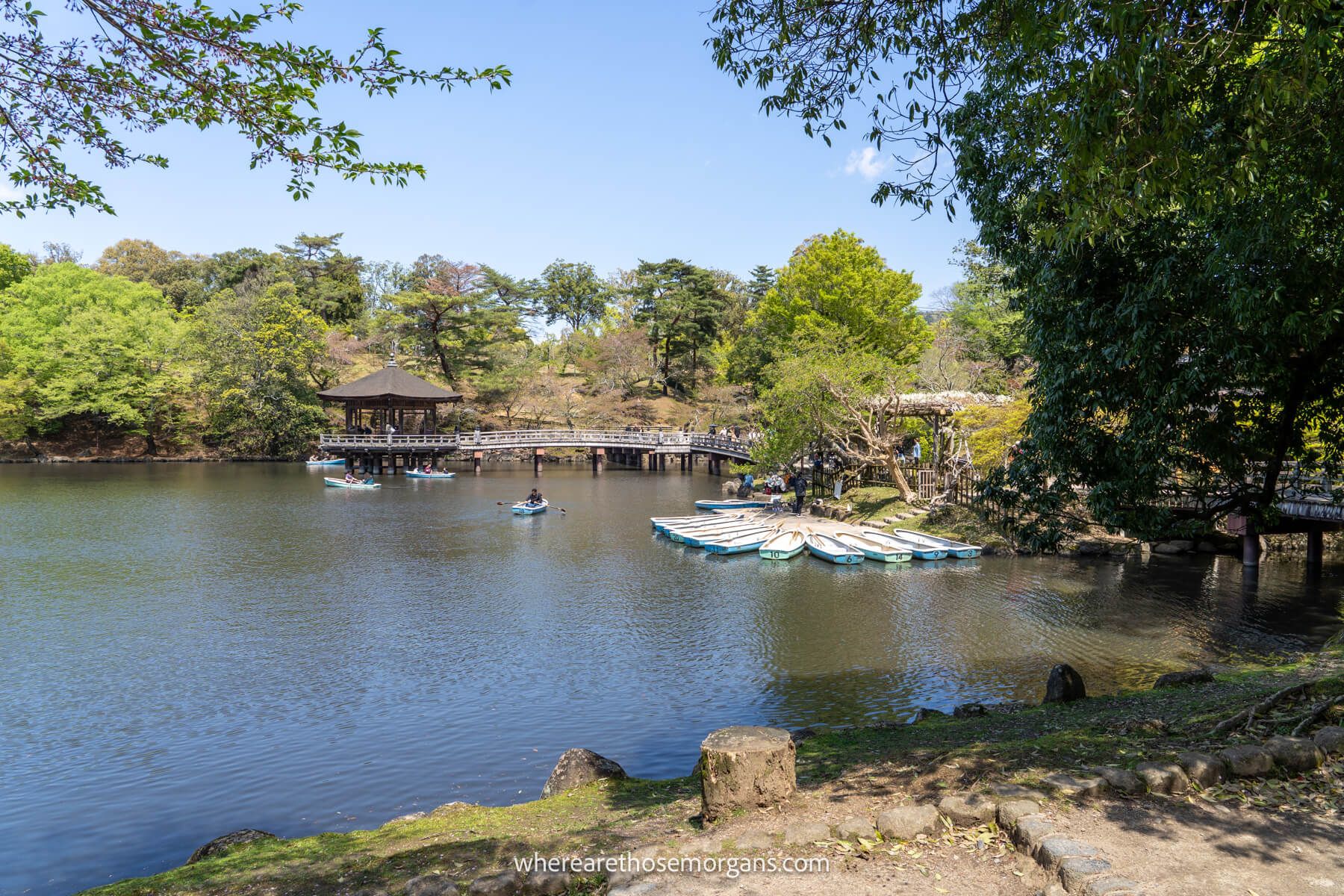
Head back towards Nara National Museum but take a left turn after the road and walk down to see Ukimido Pavilion. You’ll cross a wooden bridge over Sagi Pond and walk out to a wooden shelter that’s set within lovely surroundings.
You can also rent a rowing boat and take it out into Sagi Pond if the weather is nice or you’re looking for something romantic to do. We didn’t do it because the clock was ticking and we still had a few more stops to make before our train home.
Taste Sake At Harushika Brewery
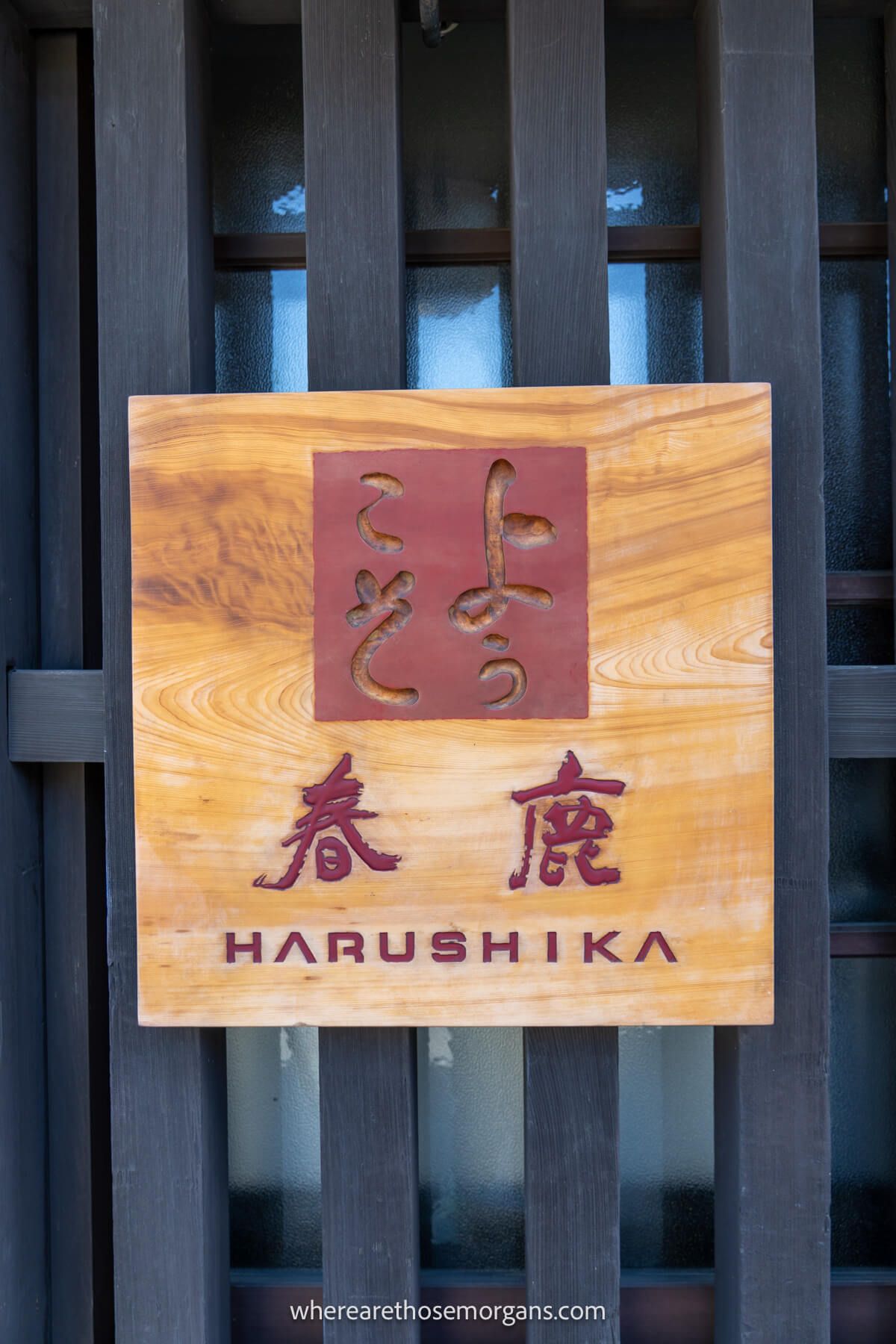
The next stop you have to make is a 10 minute walk southwest, and this is a fun one. Did you know that modern sake was invented in Nara? Well, for just ¥700 per person you can sample 5 different flavors of Japanese sake in a tasting kind of venue with English descriptions.
When we did it, we definitely felt a little bit rushed and said to each other that it might not be a hidden gem for much longer, but overall Harushika Sake Brewery was one of our favorite non-temple experiences from our second trip to Nara. The fire in our bellies was just the fuel we needed to see out the last few stops!
See The Lattice House

Heading further southwest into Naramachi (Nara’s old quarter) you’ll find the Lattice House, a traditional house typical of the Edo period with a beautiful interior and courtyard. It’s totally free to enter and the whole house is open to explore.
It only took us around 15 minutes but we thought it was a fantastic stop to see authentic Japanese design with tatami floors and sliding doors. If you don’t plan to spend more time exploring traditional places in Japan, this is a super easy and nice place to see it in person.
Grab Dinner In Higashimuki Shopping Street
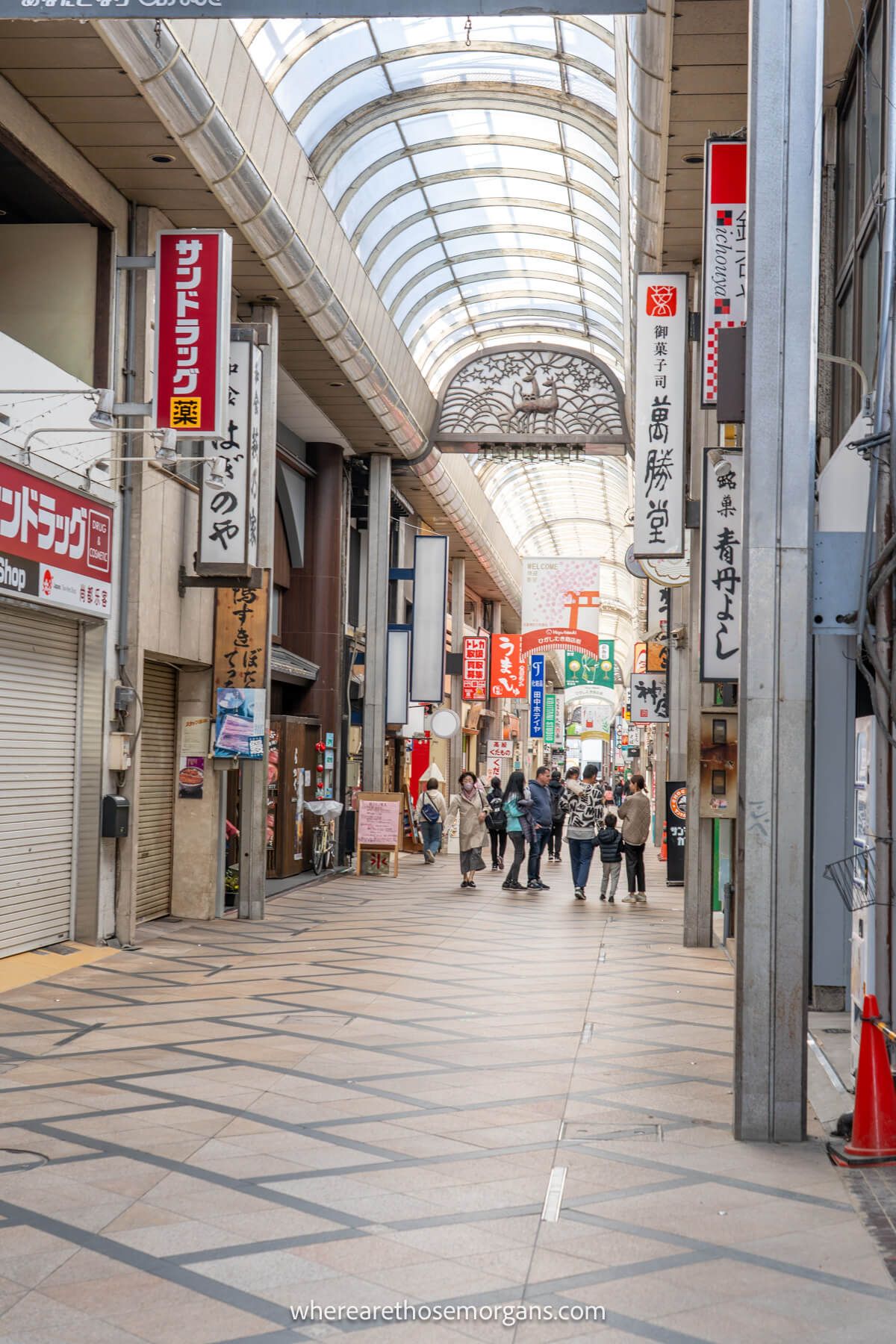
Okay, head north until you reach Sarusawa-ike Pond and stop for a minute to admire the view. If the pond is still, you’ll be able to see the five-story pagoda at Kofuku-ji reflecting in the pond.
Get back on Sanjo dori and take a right turn into Higashimuki Shopping Street. It’s a narrow pedestrian only walkway with shops, restaurants, arcades and more – and it’s all undercover which is great if you need to escape the sun or rain.
There’s tons of places you can get an early dinner here, but here are our recommendations:
- Ace Sushi (sushi)
- Kamaiki (udon noodles)
- Tonakatsu Ganko Nara (tonkatsu)
- Kamukura (ramen)
That said, none of those places are going to set your world on fire, so you might be better off waiting until you get back to Osaka or Kyoto if you’re not too hungry and can wait a bit longer. Osaka in particular has an abundance of amazing eateries.
Walking Map
Click or touch the map below to activate, zoom in and out, and scroll around. If you’d like to see a bigger version, click the “view larger map” icon in the top right, and if you’d like to see anything specific, click the arrow and square icon in the top left.
Map key:
- Red icons – Places to visit
- Blue line – Walking route
Spending A Night In Nara
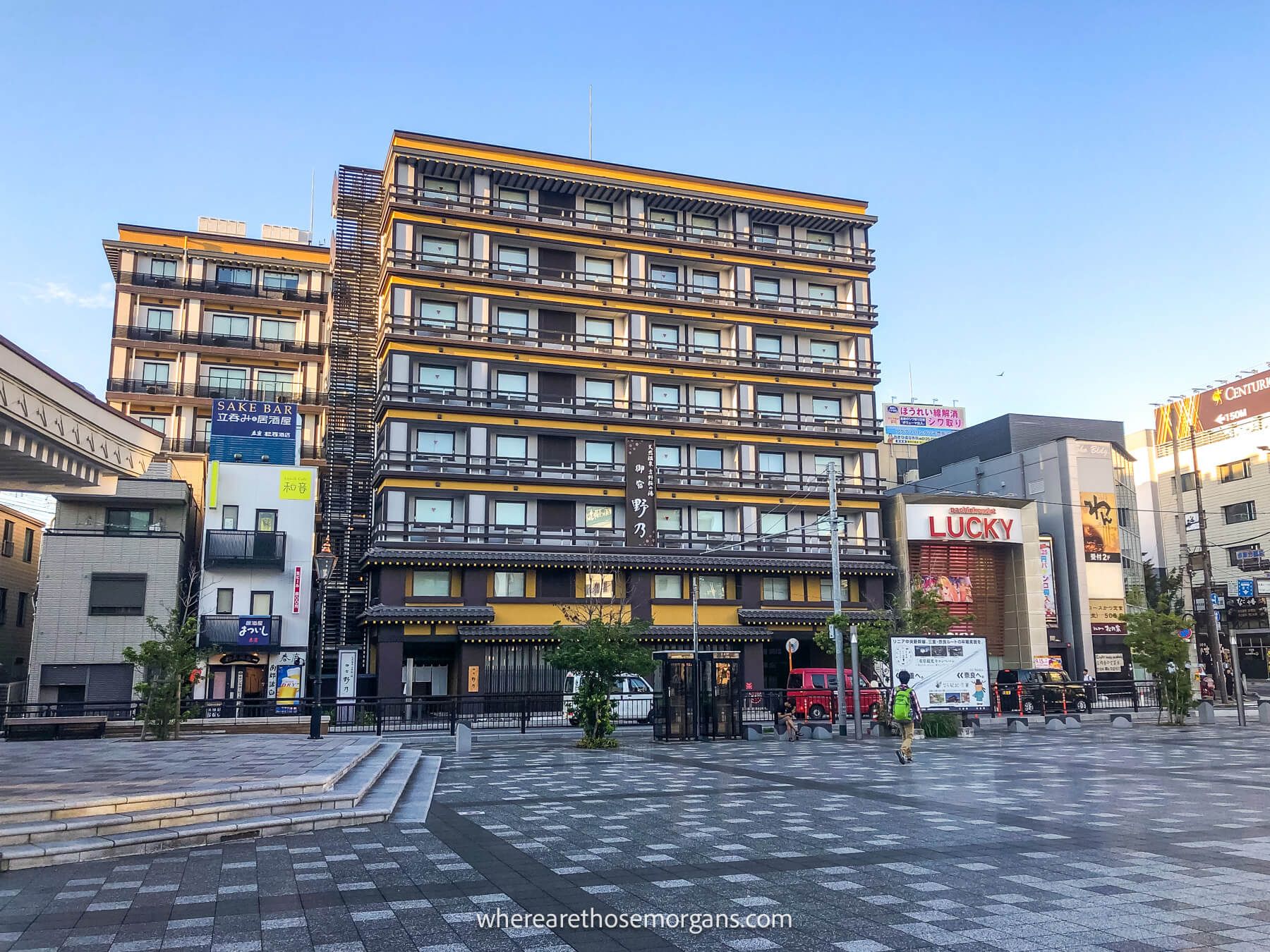
Has our day trip itinerary left you feeling like you’d rather slow things down by spending another day in Nara? We hear you. There’s a surprising amount to do, and although our itinerary is doable in one day, it is long and action packed. Plus, Nara is so calm and relaxing in the evening once all the day trippers leave.
We actually spent a night in Nara the first time we visited because we arrived from Osaka later in the day, before leaving for Kyoto early the next afternoon. At the time we hadn’t yet stayed in an onsen ryokan (traditional Japanese lodging with natural hot spring), so we booked a night at Onyado Nono Nara and it was a fantastic experience. If you’re not sure about trying one out, read our Japanese onsen guide to see our take on revealing it all in a public bath.
Of course there’s tons of other great hotel options if you don’t fancy the onsen! Here are the top rated hotels we can find in Nara:
🏨 Hotel Setre Naramachi
🏨 Iroha Grand Hotel
🏨 Nara Hotel
We hope our day trip itinerary helps you plan an amazing trip to Nara, Japan!
Please let us know if you have any questions in the comments below.
Happy Travels,
Mark and Kristen
Enjoy this guide? Pin it for your visit!
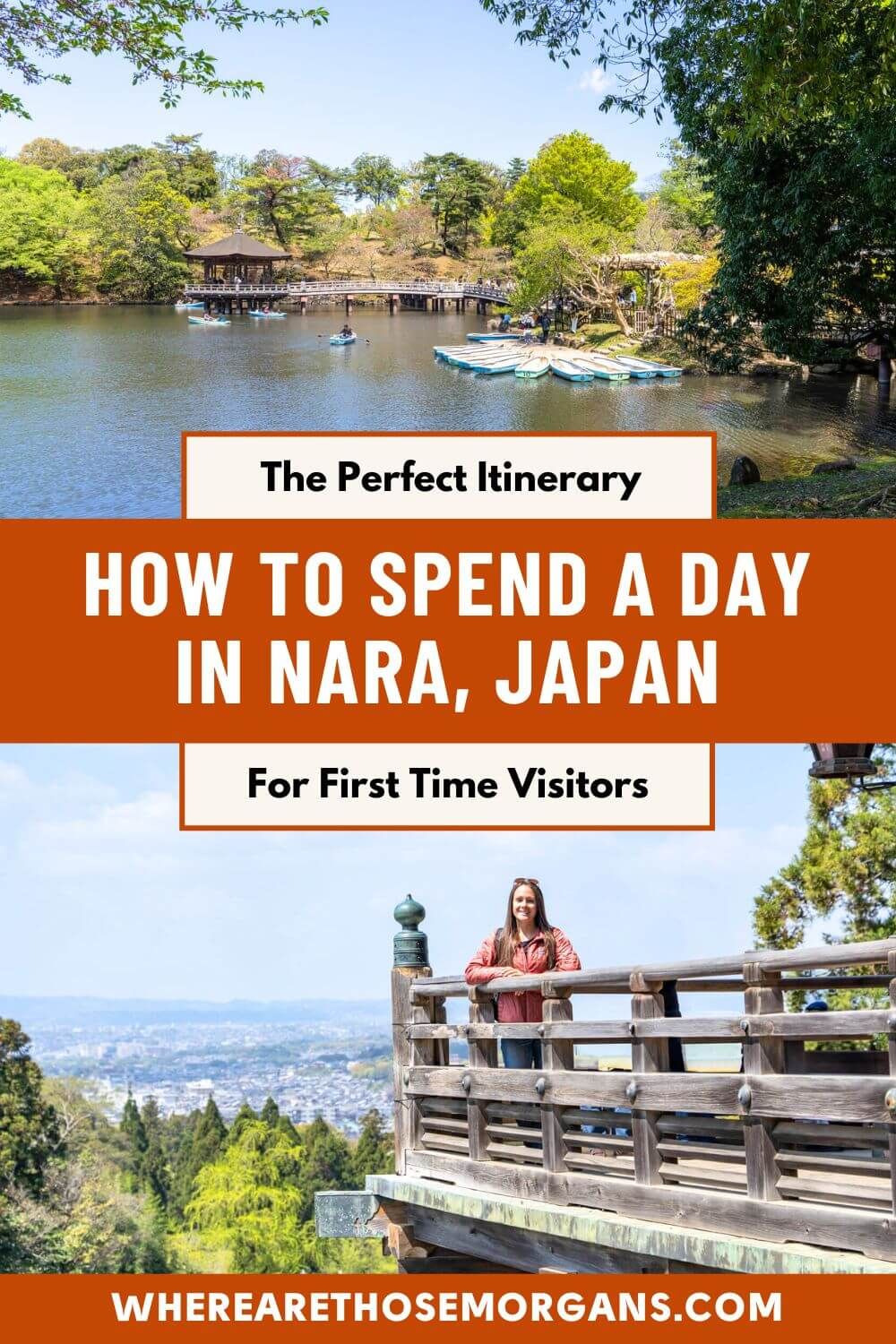
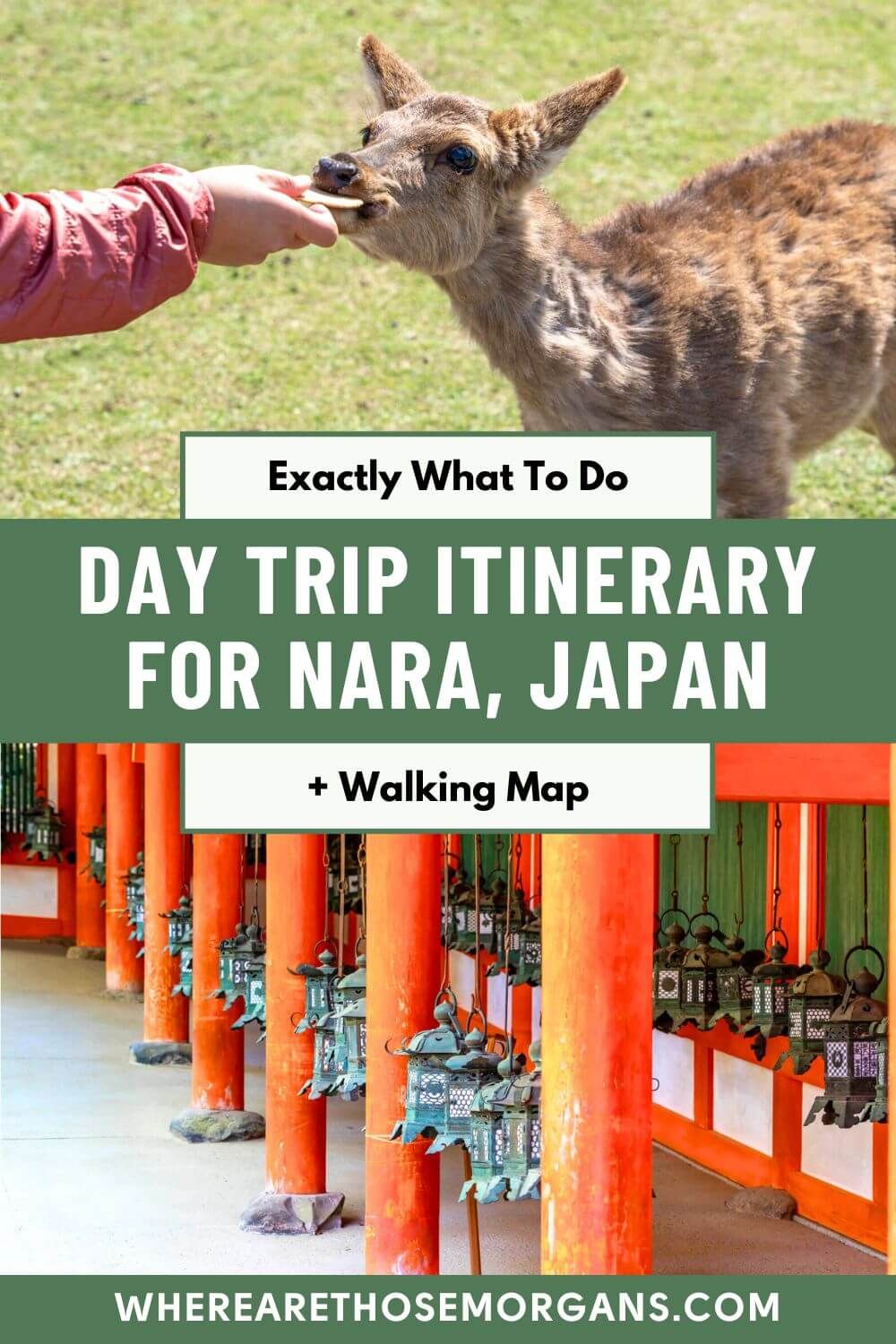
All Rights Reserved © Where Are Those Morgans, LLC. Republishing this article and/or any of its contents (text, photography, maps, graphics, etc.) in whole or in part is strictly prohibited.


